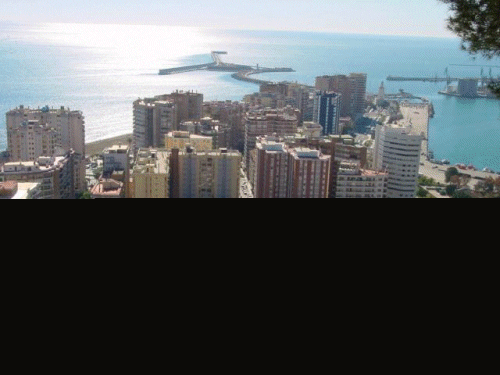
Nobody is a stranger in Malaga – the city’s coat of arms bears the words “Most hospitable”. It is cosmopolitan, and yet hundreds of foreign students come here to learn Spanish every year because they know that this is where they will learn the Spanish way of life, make Spanish friends, and yet be able to enjoy the fine weather and all the amenities of a big city and the proximity of the Costa del Sol resorts.
If you come to Malaga for any length of time, be prepared to adapt to local customs. Do not expect to do any business or see the sights during siesta time, and do expect puzzled faces if you order dinner at 7 p.m. The custom is to eat late, at 10 or even 11, and then carry on for drinks at a bar, pub or nightclub. This is also the case for young people, who often arrange to meet their friends after the late meal, and start their evening out at midnight.
Two experiences not to be missed in this city are the annual fair, held for 10 days in August, and the Holy Week celebrations. In the former, the Andalusians’ love of life, of dancing and singing round the clock, come to the fore. In the latter, the same ingredients can be found, but muted by their equally passionate religious beliefs.
To many millions of tourists who flock to the Costa del Sol, the city of Malaga is chiefly known for its ultra-modern airport, named after one of the world’s best known artists, Pablo Ruiz Picasso. In the rush to collect all their belongings and find their onward transport to the Costa resorts, few pause to consider the significance of the name. If they did, they might realise that they are standing only a few miles from the birthplace of a genius. And those who, having unpacked and taken a refreshing dip in the pool or sea, look around them for local sights worth visiting, should put Malaga at the top of their list.
A page is not enough to describe in detail all the delights that await the discerning visitor. Malaga, described by the poet Vicente Aleixandre as “Paradise city”, offers romantic and beautiful gardens, ancient monuments, fascinating museums and art galleries, restaurants and night clubs to suit all tastes, a huge range of shopping facilities, local folklore and fiestas – and of course a wealth of events and information centred on the Picasso Foundation and birthplace of Picasso. But more than all this, what Malaga offers its visitors is a taste of real Spanish life, and a very warm and sincere welcome.
With its history as a major trading port, Malaga is one of Spain’s more cosmopolitan cities and was long since granted the right to have the words “most hospitable” emblazoned on its coat of arms. It lives up to this reputation by accepting visitors and giving them any assistance they need, and more importantly, by allowing them to join in city and community life as welcome guests.
A visible sign of this welcome can be found in the streets of Malaga during the summer months. In an effort to make sure that visitors feel at home, and that they don’t need to walk round the city with eyes glued to a complicated plan instead of fixed on more enticing sights, the City Hall employs a number of tourist guides known as “cicerones” to patrol the main areas of the city centre and provide any information the tourist may require. The guides are easily recognisable from their uniform, and are there with the sole purpose of helping visitors with any information from where to eat lunch to what time the shops close, the whereabouts of a museum or the curious reason for the cathedral’s lop-sided appearance.
Another step taken to help visitors is the provision of a mobile tourist office. One of its services is to wait at the port to greet cruise liner passengers coming ashore to visit the city, saving them the often time-consuming task of finding their bearings before setting off to find the local tourist office and acquire the necessary information and maps before they can actually see anything of interest.
The City Hall also had the visitor’s best interests in mind when it installed two new tourist offices in prominent places that can easily be found. One is strategically place in the park near the City Hall, and the other at the entrance to the local train station, catering for visitors from the Costa resorts.
All in all, if you are thinking of visiting Malaga for the first time, you need hesitate no longer. Get in the car, head for the train station or catch a bus, and make first for the city centre.
How to get there
Malaga is served by one of Spain’s busiest and most modern airports, named after the city’s celebrated son, Pablo Picasso. It is also connected by rail to the rest of Spain and to the western Costa del Sol as far as Fuengirola. The port is used by ocean going liners and there are several smaller pleasure harbours in the city and nearby.
When to go:
The city is crowded during the fair week in August and during Holy Week, and this is when Malaga can be seen at its best. For a quieter visit and to escape from dreary weather, Malaga is ideal in spring, autumn and winter. October for Picasso week.
AUGUST FAIR
Visitors in August have chosen the right time to come to the coast, as the Malaga fair offers the chance of a lifetime to really get to know the people: their love of life, their culture, their festivities, and the genuine welcome they extend to all comers. The fair runs this year from August 15th to the 24th, starting the first night with a spectacular firework display in the city centre. Don’t miss it!

Be the first to comment